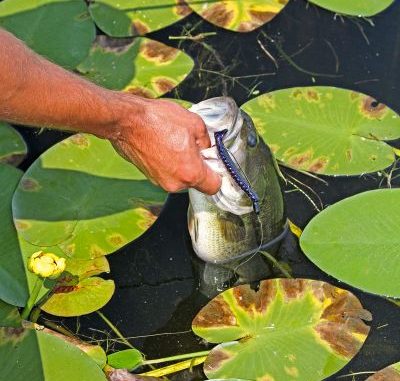
To get the most out of a big worm, Bassmaster Classic champ Casey Ashley suggests dropping down in line size.
Heavier rigs like a football-head or swing-head jig typically require 20-pound fluorocarbon, while braided line is best for punching.
But for Carolina rigging and various Texas-rigging applications, he’ll go to 15-pound.
“That way your line doesn’t have as much drag in the water,” Ashley said. “It depends on what you’re fishing, but I try to use (lighter line) whenever I can.
“Sometimes you have to go heavier because the cover is too much for 15-pound line — you can’t take a knife to a gun fight. But when you can use (lighter line), you’ll have a lot better sensitivity and your bait works better.”
On the bite, consider how much plastic a fish has to pack into its mouth for the hook to reach the setting position. Patience and close attention to line movement will help you know when to hit the fish.
The venue has a lot to do with it, as punching through weeds usually requires an immediate response to a fish that has gobbled the whole package as it dropped through the cover.
When swimming a big worm across vegetation, on the other hand, discipline yourself not to overreact to that explosive strike. Similar to frog fishing, give the fish a second to actually pull the worm down and then lean back on it.
However, for your bottom-oriented presentations, remember that the fish has to pick up that big bait and it’s not always head-first. Stay alert and reel down to come tight on the fish.
If you feel it there, set the hook; if not, keep working the worm and you’ll get another shot soon enough.


